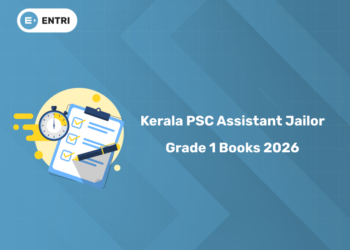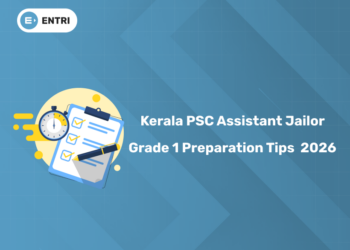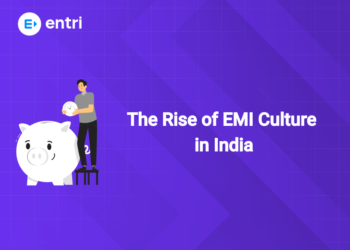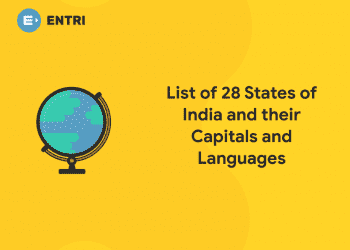Table of Contents
The Kerala PSC has released the HSST Botany Syllabus and Exam Pattern 2026 under the Higher Secondary Education Department. The updated syllabus covers key topics in Botany, including plant physiology, taxonomy, genetics, ecology, and more. It also details the exam structure, subject-wise marking scheme, and details. Download the latest HSST Botany 2026 syllabus PDF below!
Kerala PSC HSST Botany Recruitment 2026 Highlights
| Kerala PSC HSST Botany Notification 2026 | |
| Job Type | Government Job |
| Post Name | Higher Secondary School Teacher |
| Category Number | Notify Later |
| Subject | Botany |
| Notification Release Date | Notify Later |
| Application Starts | Notify Later |
| Apply Mode | Online |
| Last Date to Apply | Notify Later |
| Official Website | www.keralapsc.gov.in |
Kerala PSC HSST Botany Syllabus 2026 PDF Download
1: Between the period of 1858-1947, how many Viceroys ruled over India?
Candidates preparing for the Kerala PSC HSST Botany Exam 2026 can download the complete syllabus and exam pattern PDF from the link below. The PDF includes a detailed breakdown of each module, part-wise topics, and mark distribution. Download the PDF here!
Prepare for Kerala PSC Technical Exams with Entri
സർക്കാർ ജോലി എന്ന സ്വപ്നം ഇനി സ്വപ്നം മാത്രമല്ല! Join Kerala's Top-rated PSC Coaching Programs
Join NowKerala PSC HSST Botany Exam Pattern 2026
The Kerala Public Service Commission (KPSC) has officially released the exam pattern for the HSST Botany 2026 recruitment. The exam assess candidates’ core subject knowledge, teaching and research aptitude, awareness of the Indian Constitution, Kerala Renaissance, and current affairs. Below is the detailed exam structure of HSST Botony 2026.
- Total Marks: 100
- Total Questions: 100 (Objective Type – MCQs)
- Duration: 1 hour 15 minutes
- Mode of Exam: Offline (OMR-based)
- Negative Marking: 0.33 marks for each wrong answer
| Part | Module / Section | Main Topics | Marks |
|---|---|---|---|
| Part I | Core Subject (Botany) | Plant anatomy, physiology, taxonomy, genetics, ecology, plant biotechnology, microbiology, evolution, molecular biology, and applied botany | 70 Marks |
| Part II | Research Methodology & Teaching Aptitude | Teaching aptitude – nature, objectives, methods, teaching aids, evaluation; Research aptitude – meaning, steps, ethics, types of research, thesis writing, seminars, papers, workshops | 10 Marks |
| Part III | General Studies | Indian Constitution – Preamble, Fundamental Rights, Directive Principles, Duties, Executive, Legislature, Judiciary, Centre–State Relations, Emergency & Amendment Provisions | 5 Marks |
| Social Welfare Legislations & Programmes | RTI Act, Prevention of Atrocities Acts, Food Security Act, Environmental Acts, Employment Guarantee Programme, Organ/Blood Donation, etc. | 5 Marks | |
| Renaissance in Kerala | English education, reform movements (SNDP, NSS, etc.), social revolts, role of press, literature, women’s movements, Renaissance leaders, literary figures | 10 Marks | |
| Part IV | General Knowledge & Current Affairs | Current events (national/international), Kerala-specific facts, awards, policies, schemes, science, literature, education, health, technology | 10 Marks |
Kerala PSC HSST Botany Detailed Syllabus 2026
The Kerala PSC HSST Botany Syllabus 2026 is divided into multiple modules and parts covering key areas such as Botany, Research Methodology, Teaching Aptitude, Indian Constitution, Kerala Renaissance, General Knowledge, and Current Affairs. Candidates should review the detailed syllabus below for effective preparation.
MODULE I — Phycology, Mycology, Plant Pathology, Bryology, Pteridology, Gymnosperms, Microbiology, Palaeobotany (10 Marks)
Phycology
- Classification of algae: Fritsch and Smith.
- Recent trends in classification.
- General features of algae: thallus organization, vegetation, sexual and asexual reproduction, life cycles.
- Life-cycle patterns and salient features of: Cyanophyta, Chlorophyta, Xanthophyta, Bacillariophyta, Phaeophyta, Rhodophyta.
- Economic importance of algae: biofertilizers, food industry, industrial and medicinal uses, algal blooms.
Mycology
- Classification of fungi: Alexopoulos & Mims (1979); Ainsworth & Bisby (1983).
- General features: thallus structure, cell wall structure, heterothallism, parasexuality, reproduction.
- Salient features of classes: Myxomycota, Mastigomycota, Zygomycota, Ascomycota, Basidiomycota, Deuteromycota.
- Fungal associations: symbiosis, saprophytism, mycorrhizae, endophytes, lichens.
- Economic importance of fungi: degradation of pesticides and wastes, decomposition of organic matter, lignin degradation, medical and industrial significance, fungal toxins and human health.
Plant Pathology
- Principles of plant pathology: biotic and abiotic agents; symptoms of plant diseases.
- Process of infection and defense mechanisms: enzymes, toxins, structural and biochemical defenses.
- Disease management: chemical, biological and quarantine measures.
- Common diseases of Kerala crops: paddy, coconut, rubber, arecanut, pepper, ginger, cardamom, coffee, tea.
Bryology
- Morphology, anatomy and life cycles of Hepaticopsida, Anthocerotopsida, Bryopsida.
- Origin, evolution and economic importance of bryophytes — indicators of pollution, horticulture, medicinal uses, etc.
Pteridology
- Morphology, anatomy and life cycles of Psilopsida, Psilotopsida, Lycopsida, Sphenopsida, Pteropsida.
- Heterospory, seed habit, stelar evolution.
- Economic importance of pteridophytes — biofertilizers, horticulture, medicine, ecological indicators, weeds, food industry.
Gymnosperms
- Morphology, anatomy and life cycles of Cycadopsida, Coniferopsida, Gnetopsida.
- Economic importance of gymnosperms.
Microbiology
- Bacteria: ultra-structure, major groups, nutritional types, reproduction.
- Viruses: ultrastructure, major groups, replication.
- Brief account of prions, viroids, virions, mycoplasmas, interferons, actinomycetes, bacteriophages.
- Economic importance of microbes in ecology, food, industry, medicine, agriculture and other sectors.
Palaeobotany
- Geological time scale and evolution of plant groups.
- Types of fossilization.
- Fossil pteridophytes and gymnosperms.
MODULE II — Angiosperm Anatomy, Microtechnique, Embryology, Palynology, Plant Breeding, Evolution (10 Marks)
Angiosperm Anatomy
- Tissues: meristematic, secretory and excretory tissues; primary and secondary tissues.
- Anatomy of stem, root and leaf — primary and secondary structure.
- Anomalous secondary growth in dicot and monocot stems.
- Nodal anatomy, wood anatomy and floral anatomy (brief account).
Microtechnique
- Tools: microscopy, micrometry, camera lucida, cryostat, microtomes (rotary and sledge).
- Fixation, killing, dehydration, clearing, embedding, staining and mounting — reagents used in each step.
- Vital staining, double staining, whole mounts, maceration and histochemical tests for carbohydrates, proteins and lipids (brief account).
Embryology
- Microsporogenesis and male gametophyte development.
- Megasporogenesis and embryo-sac development.
- Pollination, fertilization and embryogeny in monocots and dicots.
- Endosperm types, polyembryony, parthenocarpy and apomixis.
Palynology
- Ultrastructure of pollen wall; pollen morphology — NPC system of classification of pollen apertures.
- Contributions of Dr. P.K.K. Nair to palynology.
- Palynology in relation to taxonomy.
- Aeropalynology, melittopalynology and pollen allergy.
Plant Breeding
- Methods and achievements in crop improvement: plant introduction, selection, mutation breeding, polyploidy breeding, hybridization.
- Inbreeding consequences, heterosis and incompatibility.
- Backcross breeding, resistance breeding (disease and stress resistance), vertical and horizontal resistance.
- Seed production and certification; major centres of crop production in India.
- Plant Breeders’ Rights; national biodiversity policy.
- Methods of vegetative propagation.
Evolution
- Origin of life — theories (classical and modern).
- Speciation.
MODULE III — Taxonomy, Morphology, Economic Botany, Ethnobotany, Phytogeography, Forest Botany, Environmental Biology (10 Marks)
Taxonomy
- Principles: plant nomenclature, taxonomic hierarchy, phylogeny of angiosperms, taxonomic keys.
- Classification systems: artificial, natural and phylogenetic.
- Interdisciplinary approaches to angiosperm systematics: anatomy, embryology, morphology, cytology, palynology, chemotaxonomy, numerical taxonomy, molecular taxonomy.
- Study of families and their characteristic features: Ranunculaceae, Magnoliaceae, Capparidaceae, Polygalaceae, Cryophyllaceae, Malvaceae, Leguminosae, Myrtaceae, Melastomaceae, Cucurbitaceae, Rubiaceae, Asteraceae, Asclepiadaceae, Boraginaceae, Lamiaceae, Amaranthaceae, Euphorbiaceae, Orchidaceae, Scitamineae, Liliaceae, Commelinaceae, Arecaceae, Araceae, Cyperaceae, Poaceae.
Morphology
- Flower as a modified shoot.
- Floral whorls and their parts; fruit and seed morphology.
- Vegetative morphology: leaf, root and stem.
Economic Botany
- Common cereals, millets and pulses.
- Vegetables, spices and beverage crops.
- Timbers, fibres, sugar and oil-yielding crops.
- Medicinal plants.
Ethnobotany
- Methods of ethnobotanical studies.
- Contributions of S.K. Jain to ethnobotany.
- Common ethnobotanically important plants of Kerala.
- Sacred groves and their importance.
Phytogeography
-
Factors affecting plant distribution.
-
Phytogeographic zones of India.
-
Soil, climate and vegetation of India.
Forest Botany
- Major and minor forest products with special reference to Kerala.
- Significance of forests for the environment.
- Consequences of deforestation and industrialization.
Environmental Biology
- Habitat ecology: terrestrial, freshwater, wetland and marine.
- Population ecology: community ecology and ecological succession.
- Ecosystems: structure, function, types and biomes.
- Species interactions: competition, herbivory, carnivory, symbiosis, etc.
- Biogeochemical cycles and environmental pollution: air, water and noise.
- Global environmental problems: ozone depletion, global warming, acid rain, nuclear hazards, El Niño, climate change.
- Environmental Impact Assessment and major programmes: UNEP, IUCN, MAB, Earth Summit, CBD.
MODULE IV — Cell & Molecular Biology, Genetics (10 Marks)
Cell & Molecular Biology
- Cell structure and function: prokaryotic and eukaryotic cells; cytoskeleton organization and motility.
- Origin, ultrastructure and functions of cell membranes and organelles.
- Chromosome chemistry: DNA, RNA, kinetochore, NOR and constrictions.
- Numerical and structural chromosome variations.
- Cell divisions: stages; synaptonemal complex; theories and mechanisms of crossing over; molecular mechanisms.
- Cell differentiation: characteristics and mechanisms.
- DNA replication in prokaryotes and eukaryotes.
- Molecular nature of genes.
- Molecular tools for studying genes and gene activity.
- Techniques of DNA analysis: preparation of DNA/RNA probes, hybridization, autoradiography, DNA fingerprinting.
- DNA sequencing; chemical synthesis of nucleotides.
- PCR and FISH and their applications.
Genetics
- Mendelian genetics and gene interaction.
- Linkage, crossing over and gene mapping.
- Polygenic inheritance.
- Extranuclear (cytoplasmic) inheritance.
- Microbial genetics: transduction, transformation and conjugation in bacteria; lysogeny and lytic cycles in viruses.
- Nucleic acids: DNA and RNA types, structure, function and replication.
- Mutations, DNA damage and repair.
- Genetic code and gene expression: protein synthesis and gene regulation in prokaryotes and eukaryotes.
- Translation, post-transcriptional and post-translational modifications.
- Contributions to gene synthesis: Khorana, Kornberg (brief account).
- Population genetics: Hardy–Weinberg equilibrium, genetic drift, genetic load, consanguinity and genetic effects.
- Human genetics: blood group systems (ABO, Rh, MN), human karyotype and syndromes due to chromosomal aberrations, genetic counselling, pedigree analysis.
- Brief account of the Human Genome Project.
MODULE V — Plant Physiology, Biochemistry, Biophysics, Biostatistics (10 Marks)
Plant Physiology
- Water relations: absorption and transpiration; stomatal opening and closing; factors affecting water transport.
- Mineral nutrition: hydroponics, aeroponics.
- Nitrogen metabolism.
- Photosynthesis: C₃, C₄ and CAM pathways in detail; photorespiration.
- Respiration: oxidative phosphorylation.
- Ascent of sap; source–sink relationships.
- Growth and development: role of phytohormones, photoperiodism, vernalization, florigen.
- Stress physiology: water, salt, heat and cold stress; heat-shock proteins and adaptations.
- Seed germination: physiological and biochemical changes.
Biochemistry
- Carbohydrates: structure, function, metabolism, interconversions.
- Lipids: structure, function, metabolism; biosynthesis of fatty acids; α- and β-oxidation.
- Amino acids and proteins: structures, properties, classification; amino-acid metabolism; Ramachandran plot; protein verification.
- Enzymes: major groups, enzyme kinetics, assay, regulation, allosteric enzymes, isoenzymes, ribozymes, coenzymes.
- Vitamins: classification, functions, sources and roles as coenzymes.
Biophysics
- pH and buffer systems.
- Microscopy: bright-field, phase-contrast, fluorescence, electron microscopy (SEM, TEM); photometry; colorimetry.
- Chromatographic techniques: gel filtration, ion exchange, affinity, TLC, GC, HPLC, HPTLC, GC–MS.
- Electrophoresis: agarose gel electrophoresis (AGE), PAGE, SDS-PAGE, isoelectric focusing, ELISA.
- Centrifugation: density gradient and ultracentrifugation.
- Biophysical methods for biopolymer analysis: X-ray diffraction, fluorescence, NMR spectroscopy, UV-visible and ESR spectroscopy, ORD/CD, atomic absorption and plasma emission spectroscopy.
- Radiation dosimetry, radioactive isotopes, autoradiography, Cerenkov radiation, liquid scintillation techniques.
Biostatistics
- Sampling methods and sampling errors.
- Data processing and presentation: tables and graphs.
- Measures of central tendency: mean, median, mode.
- Measures of dispersion: range, quartile deviation, mean deviation, standard deviation, coefficient of variation.
- Probability: basic concepts and theorems.
- Experimental design: randomized block, Latin square.
- Tests of significance: t-tests, chi-square, F-tests, ANOVA.
- Correlation and regression analysis.
MODULE VI — Biotechnology, Bioinformatics, Computer Applications (10 Marks)
Biotechnology
- Plant tissue culture techniques: direct and indirect regeneration.
- Somatic cell genetics and somaclonal variation.
- Somatic embryogenesis, artificial seeds, protoplast culture, somatic hybridization; applications in plant breeding.
- Haploid production: anther and ovule culture — applications.
- Production of secondary metabolites: cell immobilization, bioreactor technology, in-vitro germplasm conservation strategies.
- Isolation of genomic and organellar DNA; methods of gene identification — vector-mediated and vectorless PCR; genomic and cDNA libraries.
- Gene transfer techniques: direct and indirect methods; transposons as vectors; gene silencing.
- DNA markers: RFLP, RAPD, AFLP and antisense RNA.
- Blotting techniques: Northern, Southern and Western blotting.
- Transgenic biology: gene cloning and plant transformation techniques — gene targeting and sequence tags.
- Genetically modified organisms and foods: social and ethical considerations, IPR issues, patents and biopiracy.
Bioinformatics
- Introduction to data structures, database concepts and search tools.
- Application of databases in biology.
- Sequence databases, sequence comparison, structural databases, basics of proteomics and genomics.
- Major bioinformatics resources: NCBI, EBI, EMBL, GenBank, DDBJ, SwissProt, PDB.
- Tools in bioinformatics: BLAST, CLUSTAL-X/CLUSTAL-W, PHYLIP, GENSCAN.
- Applications of bioinformatics: transcriptomics, metabolomics, pharmacogenomics (brief account).
Computer Applications
- Computer applications in biology.
- Computer packages for biostatistics and numerical taxonomy.
- Hardware and software components of a computer.
- Internet resources for biology: public libraries of science, online publications, electronic journals and books.
MODULE VII — Recent Developments in Botany (10 Marks)
- Recent advances and contemporary research topics across all major areas of plant sciences (cell & molecular biology, biotechnology, ecology, taxonomy, physiology, etc.).
- Emerging technologies, current trends and their applications in agriculture, conservation and industry.
- Contemporary issues: climate change impacts on plants, GM crops, biodiversity conservation strategies, novel biotechnological approaches.
PART II — RESEARCH METHODOLOGY / TEACHING APTITUDE (10 Marks)
I. Teaching Aptitude
- Teaching: nature, objectives, characteristics and basic requirements
- Learner’s characteristics
- Factors affecting teaching
- Methods of teaching
- Teaching aids
- Evaluation systems
II. Research Aptitude
- Research: meaning, characteristics and types
- Steps of research
- Methods of research
- Research ethics
- Papers, articles, workshops, seminars, conferences and symposiums
- Thesis writing: characteristics and format
PART III — (10 Marks)
Salient Features of the Indian Constitution
- Salient features of the Constitution; Preamble — its significance and role in constitutional interpretation
- Fundamental Rights; Directive Principles of State Policy; relation between Fundamental Rights and Directive Principles; Fundamental Duties
- Executive, Legislature and Judiciary — at Union and State levels; other Constitutional authorities
- Centre–State relations — legislative, administrative and financial
- Services under the Union and the States
- Emergency provisions
- Amendment provisions of the Constitution
Social Welfare Legislations and Programmes
- Social service legislations: Right to Information Act; Prevention of Atrocities against Women & Children; Food Security Act; Environmental Acts, etc.
- Social welfare programmes: Employment Guarantee Programme; Organ and Blood Donation, etc.
RENAISSANCE IN KERALA — TOWARDS A NEW SOCIETY
Introduction to English Education
-
Introduction to English education; various missionary organisations and their functioning; founding of educational institutions, factories, printing presses, etc.
Efforts to Reform Society
(A) Socio-Religious Reform Movements
-
SNDP Yogam; Nair Service Society; Yogakshema Sabha; Sree Narayana Paripalana Sangham (Sadhu Jana Paripalana Sangham); Vaala Samudaya Parishkarani Sabha; Samathwa Samajam; Islam Dharma Paripalana Sangham; Prathyaksha Raksha Daiva Sabha; Sahodara Prasthanam; etc.
(B) Struggles and Social Revolts
-
Upper cloth revolts; Channar agitation; Vaikom Satyagraha; Guruvayoor Satyagraha; Paliyam Satyagraha; Kuttamkulam Satyagraha; Temple Entry Proclamation; Temple Entry Act; Malayalee Memorial; Ezhava Memorial; Malabar riots; Civil Disobedience Movement; Abstention Movement; etc.
Role of the Press in Renaissance
-
Newspapers and periodicals: Malayalee, Swadeshabhimani, Vivekodayam, Mithavadi, Swaraj, Malayala Manorama, Bhashaposhini, Mathrubhumi, Kerala Kaumudi, Samadarsi, Kesari, Al-Ameen, Prabhatham, Yukthivadi, etc.
Awakening through Literature
-
Novel, drama, poetry; Purogamana Sahithya Prasthanam; Nataka Prasthanam; library movement; etc.
Women and Social Change
-
Key figures: Parvathi Nenmenimangalam, Arya Pallam, A. V. Kuttimalu Amma, Lalitha Prabhu, Akkamma Cheriyan, Anna Chandi, Lalithambika Antharjanam, and others.
Leaders of the Renaissance
-
Thycaud Ayya Vaikundar; Sree Narayana Guru; Ayyan Kali; Chattampi Swamikal; Brahmananda Sivayogi; Vagbhadananda; Poikayil Yohannan (Kumara Guru); Dr. Palpu; Palakkunnath Abraham Malpan; Mampuram Thangal; Sahodaran Ayyappan; Pandit K. P. Karuppan; Pampadi John Joseph; Mannathu Padmanabhan; V. T. Bhattathirippad; Vakkom Abdul Khadar Maulavi; Makthi Thangal; Blessed Elias Kuriakose Chavara; Barrister G. P. Pillai; T. K. Madhavan; Moorkoth Kumaran; C. Krishnan; K. P. Kesava Menon; Dr. Ayyathan Gopalan; C. V. Kunjuraman; Kuroor Neelakantan Namboothiripad; Velukkutty Arayan; K. P. Vellon; P. K. Chathan Master; K. Kelappan; P. Krishna Pillai; A. K. Gopalan; T. R. Krishnaswami Iyer; C. Kesavan; Swami Ananda Theerthan; M. C. Joseph; Kuttippuzha Krishna Pillai; and others.
Literary Figures
-
Kodungallur Kunhikkuttan Thampuran; Kerala Varma Valiya Koil Thampuran; Kandathil Varghese Mappila; Kumaran Asan; Vallathol Narayana Menon; Ulloor S. Parameswara Iyer; G. Sankara Kurup; Changampuzha Krishna Pillai; Chandu Menon; Vaikom Muhammad Basheer; Kesav Dev; Thakazhi Sivasankara Pillai; Ponkunnam Varkey; S. K. Pottakkad; and others.
PART IV — GENERAL KNOWLEDGE AND CURRENT AFFAIRS (10 Marks)
- Current national and international events of importance
- Important government schemes and policies
- Awards, honours and major recognitions in science, literature and public life
- Basic facts of geography, economy and polity relevant to Kerala and India
- Recent developments in education, health, environment and technology
How to Download Kerala PSC HSST Botany Syllabus & Exam Pattern 2026
Candidates can easily download the official HSST Botany Syllabus & Exam Pattern 2026 from the Kerala PSC website by following these steps:
- Visit the official Kerala PSC website – www.keralapsc.gov.in.
- Click on the “Downloads” section on the homepage.
- Select “Syllabus” from the dropdown menu.
- Choose “Post Wise Syllabus” from the available options.
- Search for “HSST Botany” and click on the Download icon next to it.
- The syllabus PDF will open — save or print it for future reference











